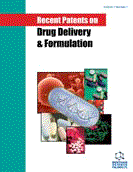Abstract
Hot Melt Extrusion (HME) and Injection Moulding (IM) are becoming more prevalent in the drug delivery field due to their continuous nature and advantages over current pharmaceutical manufacturing techniques. Hot melt extrusion (HME) is a process that involves the use of at least one reciprocating screw to force a thermoplastic resin along a heated barrel and through a die, while injection moulding is a forming process were molten polymer is forced at high pressure to enter a mould. HME offers a number of advantages over conventional pharmaceutical manufacturing techniques such as increased solubility and bioavailability of poorly water soluble drugs, a solvent free and continuous process, improved content uniformity and flexibility in manufacture. Injection moulding (IM) has been recognised as a rapid and versatile manufacturing technique, which has the advantages of being a continuous process, which is easily scaled up by the use of larger equipment and moulds. However, despite their advantages and the significant number of publications and patents on HME and IM drug delivery devices there are very few marketed formulations. These marketed products range from oral dosage forms which improve bioavailability and reduce pill burden to vaginal rings which provide long-term controlled release thus improving patient compliance. The patenting strategy for IM and HME seems to be focused towards patenting the finished product, more so than patenting the manufacturing process. This is probably due to the fact that the IM and HME processes have already been patented. Conclusion: HME is a process where raw materials (i.e. polymer, plasticizer, drug etc.) are mixed and pumped along by a rotating screw(s) at elevated temperatures through a die to produce a product of uniform shape. IM is similar to HME except that the raw materials are pushed into a mould which is set at lower temperatures. Interest in the use of HME and IM within the pharmaceutical industry is growing with as steady increase in the number of HME patents being issued and with more than 10 products, ranging from oral dosage forms to implantable devices, currently on the market. Therefore, this review of HME and IM is important to the scientific community to further understand and advance these novel and exciting manufacturing techniques.
Keywords: Controlled release, hot melt extrusion, implantable devices, injection moulding, solubility enhancement, taste masking.

















